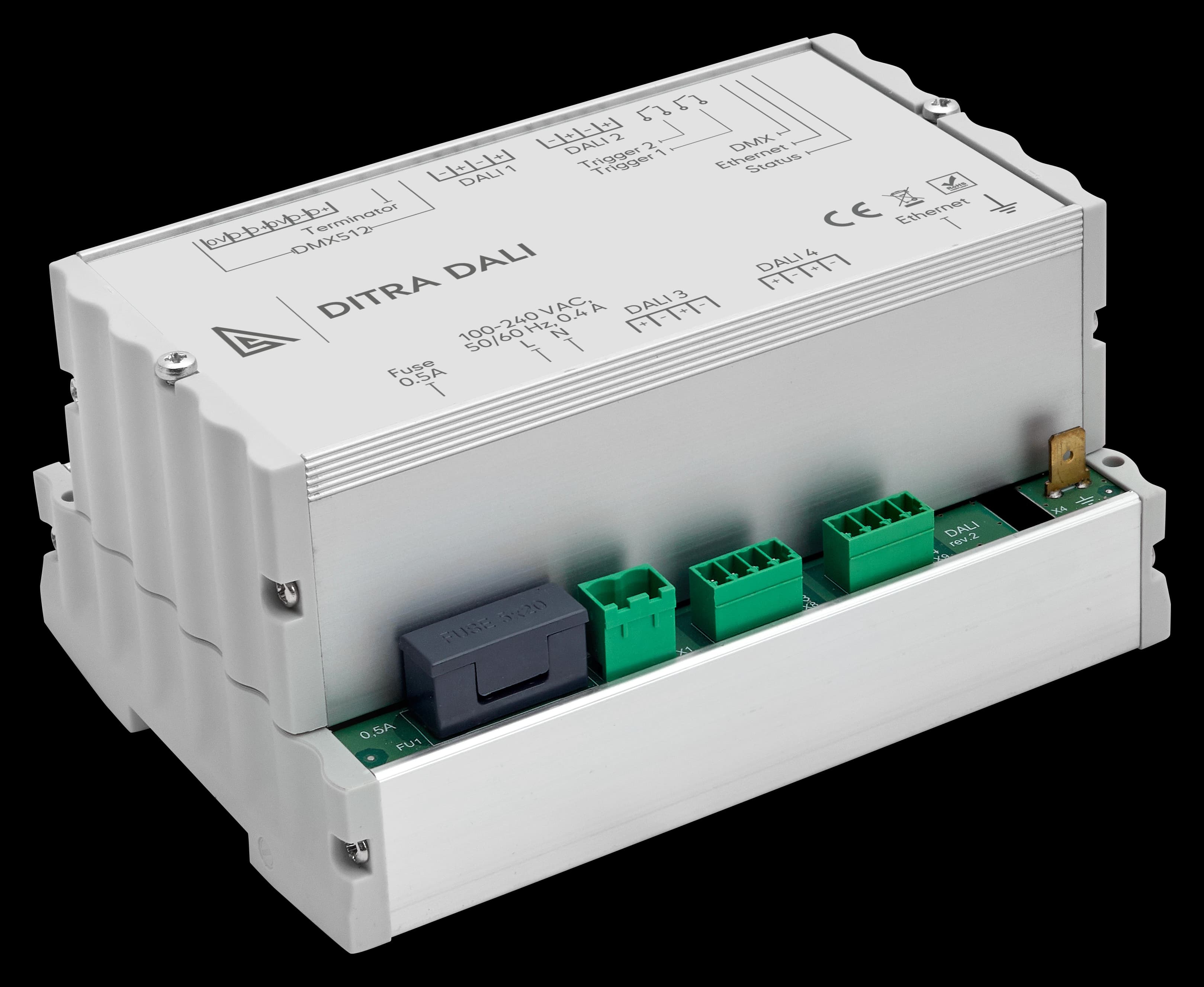Can RGB/RGBW luminaires be controlled via DALI? Why is DMX usually preferred?
Understand the strengths of each protocol for architectural and dynamic lighting

This is one of the most common questions we receive from architects and engineers: “Can we control RGB or RGBW LEDs via DALI? Or do we need to go with DMX from the start?”
In short: Yes, you can control RGB/RGBW with DALI — but if you’re doing anything more than static lighting, DMX is almost always the better choice.
Let’s break it down by numbers.
Addresses and devices:
- DALI supports up to 64 addressable devices per line.
An RGBW fixture will consume up to 4 addresses (one per channel: R, G, B, W). → That means you can only control 16 RGBW luminaires per DALI line before hitting the limit.
- DMX allows 512 channels per universe (line).
- An RGBW luminaire still takes just 4 channels, but is treated as one device under centralized control. → So you can connect up to 128 RGBW luminaires per DMX line.

Refresh rate:
- DALI sends commands slowly — about 2–3 commands per second. → Fine for on/off, smooth dimming, or occasional color changes. → But any dynamic scenes will appear choppy and out of sync.
DMX updates up to 44 frames per second, continuously refreshing all channels. → Perfect for animations, gradients, and lighting shows — all in perfect sync.
Line length:
- DMX supports line lengths of up to 300 meters without repeaters, assuming shielded cables are used.
- DALI is also limited to about 300 meters, but it’s more vulnerable to interference — especially with complex topologies or outdoor environments. → DALI also sends power and data over the same wires, which can require extra care in street installations.

When to use DALI?
- For facades with rare color changes (e.g., once a day)
- For integration with a BMS or city-wide management system
Not recommended for dynamic effects — DALI reaches its limits quickly here.
When do you need DMX?
- To “bring to life” a bridge, building, or waterfront
- When precise synchronization and high-speed updates are key
- When there are many RGBW fixtures and you need scalable, flexible control
Choosing between DALI and DMX? Get in touch — we’ll help you find the best solution for your goals, budget, and architectural needs.



